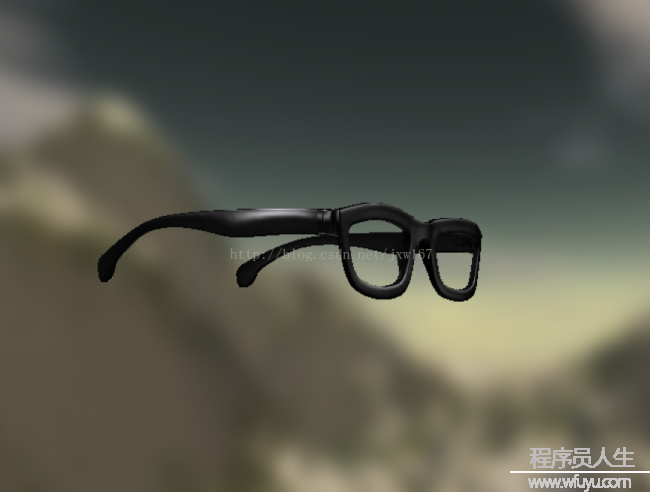筆者介紹:姜雪偉,IT公司技術(shù)合伙人,IT高級講師,CSDN社區(qū)專家,特邀編輯,暢銷書作者,國家專利發(fā)明人;已出版書籍:《手把手教你架構(gòu)3D游戲引擎》電子工業(yè)出版社和《Unity3D實戰(zhàn)核心技術(shù)詳解》電子工業(yè)出版社等。
每一個3D引擎都有對外提供的接口類,這個類主要是用于創(chuàng)建掛接場景中的所有物體,構(gòu)成場景的樹狀結(jié)構(gòu)。在Cocos2D-x引擎中,2d使用的是Sprite類,在3D模塊中為了辨別2D的Sprite類,新增加了Sprite3D類。該類是用于掛接場景中的3D物體,3D游戲場景中物體組織是樹狀結(jié)構(gòu),在邏輯編寫中使用的非常多。首先開發(fā)者要用Sprite3D類對象創(chuàng)建場景中的物體,3D場景中的物體都是Sprite3D精靈,引擎要做的第1件事情是創(chuàng)建精靈,實現(xiàn)的函數(shù)內(nèi)容以下所示:
Sprite3D* Sprite3D::create(const std::string& modelPath)
{
CCASSERT(modelPath.length() >= 4, "invalid filename for Sprite3D");
auto sprite = new (std::nothrow) Sprite3D();
if (sprite && sprite->initWithFile(modelPath))
{
sprite->_contentSize = sprite->getBoundingBox().size;
sprite->autorelease();
return sprite;
}
CC_SAFE_DELETE(sprite);
return nullptr;
}
Sprite3D* Sprite3D::create(const std::string& modelPath, const std::string& texturePath)
{
auto sprite = create(modelPath);
if (sprite)
{
sprite->setTexture(texturePath);
}
return sprite;
}
create函數(shù)在創(chuàng)建模型時常常用到,創(chuàng)建出可顯示的模型,第1個函數(shù)的參數(shù)是模型的加載路徑,第2個函數(shù)是模型的加載路徑和紋理貼圖名字,可更換模型貼圖材質(zhì)。后面會用案例給讀者介紹,在上面的函數(shù)中提供了初始化模型文件信息函數(shù)initWithFile以下所示:
bool Sprite3D::initWithFile(const std::string& path)
{
_aabbDirty = true;
_meshes.clear();
_meshVertexDatas.clear();
CC_SAFE_RELEASE_NULL(_skeleton);
removeAllAttachNode();
if (loadFromCache(path))
return true;
MeshDatas* meshdatas = new (std::nothrow) MeshDatas();
MaterialDatas* materialdatas = new (std::nothrow) MaterialDatas();
NodeDatas* nodeDatas = new (std::nothrow) NodeDatas();
if (loadFromFile(path, nodeDatas, meshdatas, materialdatas))
{
if (initFrom(*nodeDatas, *meshdatas, *materialdatas))
{
//加到緩存
auto data = new (std::nothrow) Sprite3DCache::Sprite3DData();
data->materialdatas = materialdatas;
data->nodedatas = nodeDatas;
data->meshVertexDatas = _meshVertexDatas;
for (const auto mesh :_meshes) {
data->glProgramStates.pushBack(mesh->getGLProgramState());
}
Sprite3DCache::getInstance()->addSprite3DData(path, data);
CC_SAFE_DELETE(meshdatas);
_contentSize = getBoundingBox().size;
return true;
}
}
CC_SAFE_DELETE(meshdatas);
CC_SAFE_DELETE(materialdatas);
CC_SAFE_DELETE(nodeDatas);
return false;
}
initWithFile函數(shù)是引擎提供的加載模型對外接口,函數(shù)功能是實現(xiàn)了加載模型信息比如:材質(zhì)信息,模型數(shù)據(jù)信息等。在加載模型之前需要先申請寄存模型頂點數(shù)據(jù)信息,材質(zhì)信息,模型的結(jié)點信息,這些信息具體實現(xiàn)是在loadFromFile函數(shù)中實現(xiàn)的,函數(shù)以下所示:
bool Sprite3D::loadFromFile(const std::string& path, NodeDatas* nodedatas, MeshDatas* meshdatas, MaterialDatas* materialdatas)
{
std::string fullPath = FileUtils::getInstance()->fullPathForFilename(path);
std::string ext = FileUtils::getInstance()->getFileExtension(path);
if (ext == ".obj")
{
return Bundle3D::loadObj(*meshdatas, *materialdatas, *nodedatas, fullPath);
}
else if (ext == ".c3b" || ext == ".c3t")
{
//加載模型文件 .c3b 或 .c3t
auto bundle = Bundle3D::createBundle();
if(!bundle->load(fullPath))
{
Bundle3D::destroyBundle(bundle);
return false;
}
auto ret = bundle->loadMeshDatas(*meshdatas)
&& bundle->loadMaterials(*materialdatas) && bundle->loadNodes(*nodedatas);
Bundle3D::destroyBundle(bundle);
return ret;
}
return false;
}
bool Bundle3D::load(const std::string& path)
{
if (path.empty())
return false;
if (_path == path)
return true;
getModelRelativePath(path);
bool ret = false;
std::string ext = FileUtils::getInstance()->getFileExtension(path);
if (ext == ".c3t")
{
_isBinary = false;
ret = loadJson(path);
}
else if (ext == ".c3b")
{
_isBinary = true;
ret = loadBinary(path);
}
else
{
CCLOG("warning: %s is invalid file formate", path.c_str());
}
ret?(_path = path):(_path = "");
return ret;
}
load函數(shù)實現(xiàn)的是利用Bundle3D類提供的加載函數(shù)讀取模型文件內(nèi)容,這樣利用Sprite3D類提供的接口就能夠把模型加載顯示出來。
以上展現(xiàn)的函數(shù),開發(fā)者在編寫邏輯時常常調(diào)用到,固然Sprite3D類不但只是提供這幾個函數(shù)接口。在后面的章節(jié)中會詳細給讀者講授。下面通過案例給讀者展示如何使用Sprite3D類的接口加載模型的代碼片斷:
Sprite3DForceDepthTest::Sprite3DForceDepthTest()
{
auto orc = cocos2d::Sprite3D::create("Sprite3DTest/orc.c3b");
orc->setScale(5);
orc->setNormalizedPosition(Vec2(.5f,.3f));
orc->setPositionZ(40);
orc->setRotation3D(Vec3(0,180,0));
orc->setGlobalZOrder(⑴);
addChild(orc);
auto ship = Sprite3D::create("Sprite3DTest/boss1.obj");
ship->setScale(5);
ship->setTexture("Sprite3DTest/boss.png");
ship->setNormalizedPosition(Vec2(.5,.5));
ship->setRotation3D(Vec3(90,0,0));
ship->setForceDepthWrite(true);
addChild(ship);
}

在Cocos2D-x引擎中凡是觸及到創(chuàng)建模型對象都會與Sprite3D精靈有關(guān)系。
